I got a scatter graph of Volume(x-axis) against Price(dMidP,y-axis) scatter plot, and I want to divide the x-axis into 30 evenly spaced sections and average the values, then plot the average value

my code here does not return me the desired plot:
V_norm = Average_Buy['Volume_norm']
df = pd.DataFrame({'X' : np.log(Average_Buy['Volume_norm']), 'Y' : Average_Buy['dMidP']}) #we build a dataframe from the data
total_bins = 30
bins = np.geomspace(V_norm.min(), V_norm.max(), total_bins)
data_cut = pd.cut(df.X,bins)
grp = df.groupby(by = data_cut) #we group the data by the cut
ret = grp.aggregate(np.mean) #we produce an aggregate representation (median) of each bin
plt.loglog(np.log(Average_Buy['Volume_norm']),Average_Buy['dMidP'],'o')
plt.loglog(ret.X,ret.Y,'r-')
plt.show()
my bin returns me: (which looks correct)
array([ 0.59101371, 0.64421962, 0.70221538, 0.76543219, 0.83434009,
0.90945141, 0.99132461, 1.08056843, 1.17784641, 1.28388183,
1.39946306, 1.52544948, 1.6627778 , 1.81246908, 1.97563628,
2.15349259, 2.34736038, 2.55868108, 2.7890259 , 3.04010746,
3.3137926 , 3.61211619, 3.93729631, 4.29175071, 4.67811481,
5.09926127, 5.55832137, 6.05870826, 6.6041424 , 7.19867916])
However, my data_cut returns me:
Time Time
11 0 NaN
1 NaN
2 NaN
3 NaN
4 NaN
5 NaN
6 NaN
7 NaN
8 NaN
9 NaN
10 (0.991, 1.081]
11 NaN
12 NaN
13 NaN
14 NaN
15 NaN
16 NaN
17 NaN
18 NaN
19 NaN
20 NaN
21 NaN
22 NaN
23 NaN
24 NaN
25 NaN
26 NaN
27 NaN
28 NaN
29 NaN
...
14 30 NaN
31 NaN
32 NaN
33 NaN
34 NaN
35 NaN
36 NaN
37 NaN
38 NaN
39 NaN
40 NaN
41 NaN
42 NaN
43 NaN
44 NaN
45 NaN
46 NaN
47 NaN
48 NaN
49 NaN
50 NaN
51 NaN
52 NaN
53 NaN
54 NaN
55 NaN
56 NaN
57 NaN
58 NaN
59 NaN

